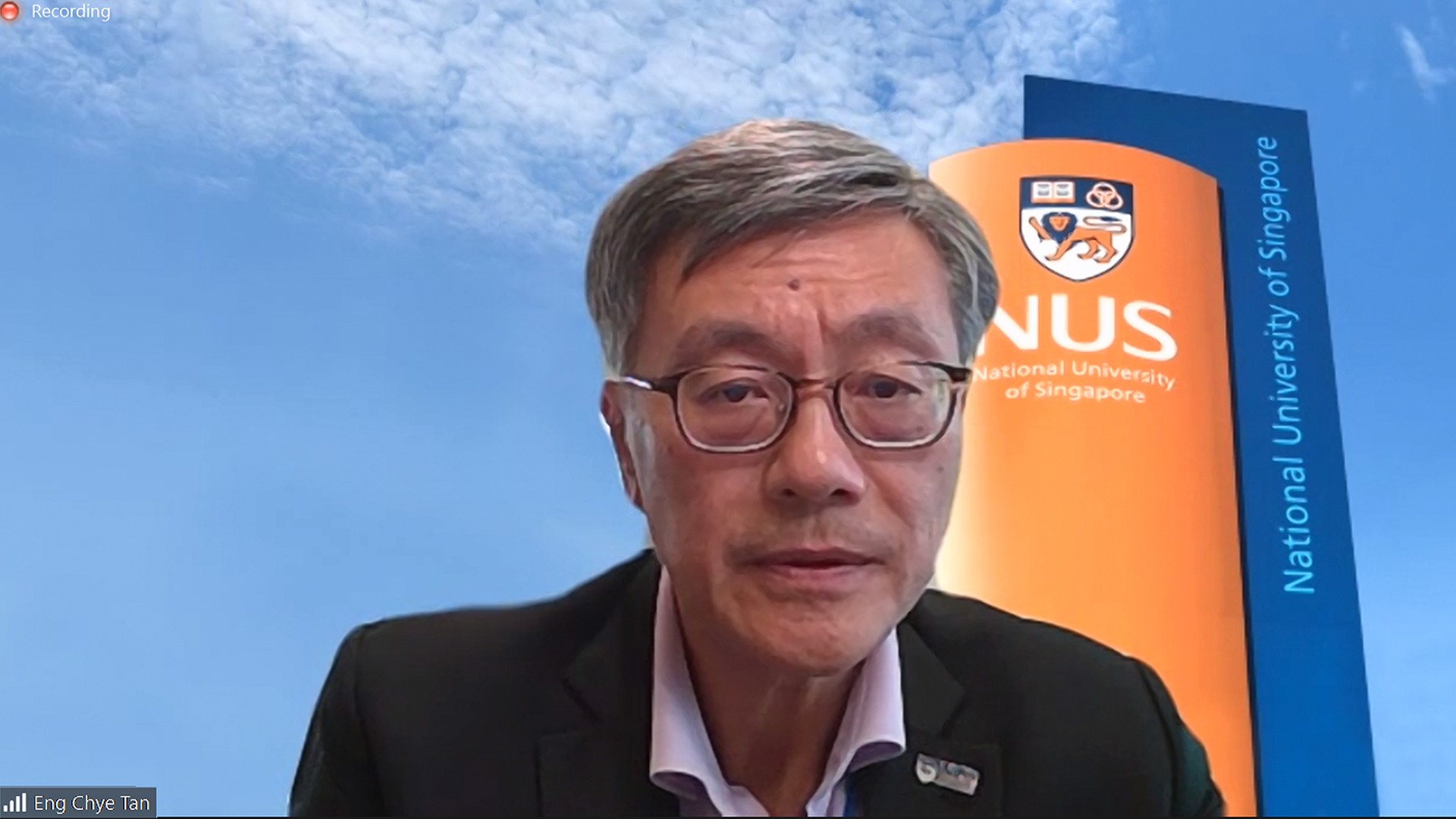Creating a greener and more sustainable campus
April 12, 2021
IN BRIEF | 4 min read
- NUS President, Professor Tan Eng Chye was at a recent forum organised by China’s Zhejiang University to discuss the role of universities worldwide in the United Nations’ 2030 Agenda for Sustainable Development.

UTown, an example of a sustainably designed, built and operated precinct.
NUS is on track for its Climate Action Plan 2030 with two signature initiatives – creating a carbon-neutral university, and the cooling of the campus by a substantial 4 deg C.
The University’s plans and efforts towards sustainability and climate action were shared by NUS President Professor Tan Eng Chye at a recent forum organised by China’s Zhejiang University to discuss the role of universities worldwide in the United Nations’ 2030 Agenda for Sustainable Development. The forum featured global university leaders, who issued a joint statement to reaffirm their commitment to help achieve the important goals of the UN Agenda.
“The complexity and comprehensive nature of the UN Sustainable Development Goals require integrated solutions and coordinated actions. Universities clearly have an important role in furthering this cause,” said Prof Tan.
 Prof Tan sharing about the University’s Climate Action Plan 2030.
Prof Tan sharing about the University’s Climate Action Plan 2030.
Prof Tan shared that NUS has about 40,000 sensors and is adding more across the campus to measure various environmental parameters. “These allow us to manage energy and also tap on renewable energy,” he explained.
A digital model of the campus has been developed for campus planning and environmental simulation. Some 10,000 trees are being planted in the campus every year to hit the goal of 100,000 trees. These trees will help in carbon sequestration, the process of capturing carbon dioxide from the atmosphere.
Steps are also being taken to reduce the solar gain and heat load generated by development and operations. “We are minimising transportation, making the campus as car-lite as possible, and also having green transportation,” added Prof Tan.
 The forum, hosted by Zhejiang University on 24 March, featured education leaders dialing in from all over the world. They discussed efforts by their universities to advance the United Nations’ 2030 Agenda for Sustainable Development.
The forum, hosted by Zhejiang University on 24 March, featured education leaders dialing in from all over the world. They discussed efforts by their universities to advance the United Nations’ 2030 Agenda for Sustainable Development.
Green infrastructure projects
Prof Tan also shared about the University’s ambitious green infrastructure projects, citing the examples of University Town (UTown) and the School of Design and Environment (SDE) precinct.
UTown, which sits on the site of a former golf course, was sustainably designed, built and operated. It was the first educational institution to be certified as a Green Mark district by the Building and Construction Authority.
“UTown is really a sandbox for sustainability practices at NUS where we can experiment with bold ideas such as centralised district cooling, the incorporating of natural ventilation and biodiversity, and also pedestalisation of the whole precinct,” said Prof Tan.
The precinct, which welcomed its first residents in August 2011, is a thoughtful integration of the built and natural environment in order to preserve the site’s rolling terrain and natural biodiversity. Its north-south alignment for buildings reduces exposure to direct sunlight and minimises cooling loads. Major circulation areas also enjoy natural ventilation.
The savings are substantial – about 3.8 million kWh of electricity – or about $1 million in energy costs compared with business-as-usual. Green features also allow NUS to save about 100 Olympic-sized pools worth of water.

SDE4 is Singapore’s first purpose-built net-zero energy building.
Elaborating on the SDE precinct, Prof Tan shared that one of its buildings, SDE4, is Singapore’s first purpose-built net-zero energy building – meaning it does not contribute emissions into the atmosphere. Completed in 2019, the building features more than 1,200 solar photovoltaic panels on its rooftop. It is a living laboratory to explore the impact of buildings on human health and well-being.
Two other SDE buildings built in the 1970s are also undergoing low-carbon adaptive re-use and retrofitting, to become net-zero energy buildings as well.
NUS in-house expertise is being tapped on in areas of design architecture, landscape architecture, sustainability design, energy management and spatial design, to test-bed applicable environmental concepts.
“We really hope that the SDE precinct will be a blueprint for the entire NUS for environmentally-sensitive design and also climate stewardship for a sustainable future,” said Prof Tan.
This story first appeared on NUSnews on 25 March 2021.

